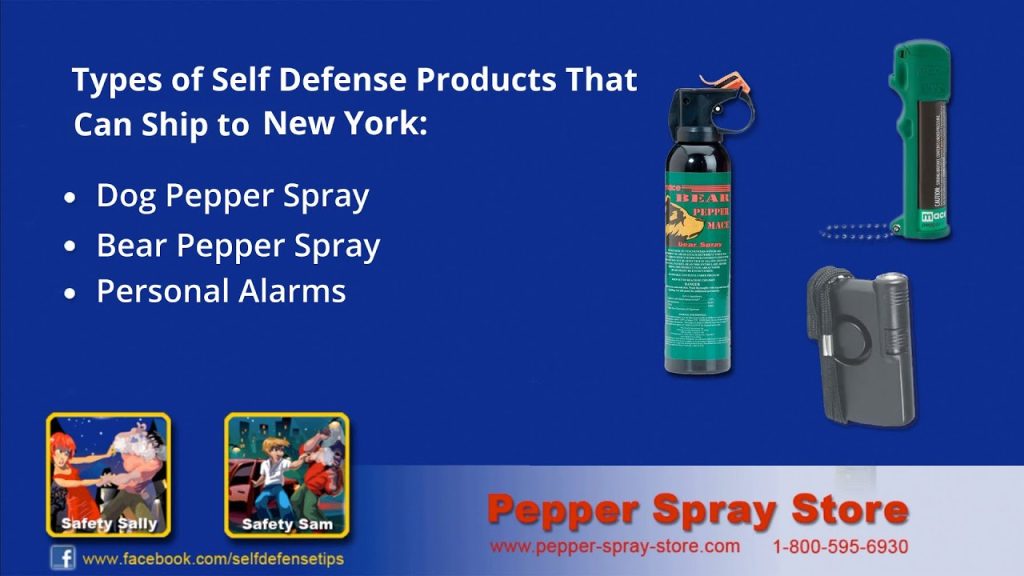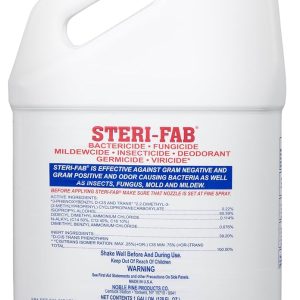
The legality, purchase, and use of self-defense sprays containing oleoresin capsicum (OC), within a specific major metropolitan area, is a multifaceted topic. Such sprays are designed for personal protection against potential assailants. Regulations concerning these products vary considerably across different jurisdictions.
The availability and employment of these defensive tools reflect a balance between individual safety concerns and public safety interests. Understanding the historical context of self-defense measures, alongside the practical benefits of non-lethal options for deterring crime, informs the ongoing discussion surrounding their regulation and accessibility. The potential to de-escalate threatening situations without causing permanent harm is a significant advantage.
The following sections will delve into the specific legal framework governing OC sprays, acceptable usage guidelines, and the associated responsibilities for individuals choosing to carry and deploy such a device within the aforementioned city.
1. Legality
The legal framework surrounding oleoresin capsicum (OC) spray in New York State, particularly within New York City, is defined by specific statutes and judicial interpretations. The permissibility of possessing and deploying such a self-defense tool hinges directly on adherence to these regulations. Failure to comply can result in criminal charges, negating the intended benefit of self-protection. New York law stipulates that the use of OC spray must be justified by a reasonable belief of imminent physical harm, emphasizing proportionality and necessity. For example, deploying the spray against someone who poses no immediate threat constitutes unlawful use.
The importance of understanding the legal nuances is paramount. Ignorance of the law is not a valid defense. Consider the case of an individual who uses OC spray in a minor dispute, resulting in assault charges. Proper understanding of self-defense laws, pre-emptive de-escalation techniques, and the limitations of defensive spray are critical. Furthermore, legal repercussions extend beyond criminal charges; civil lawsuits can arise from improper or excessive use, placing a financial burden on the individual involved.
In summary, the legality of OC spray use in New York necessitates a comprehensive understanding of the associated statutes and their application. Misinterpretation or disregard of these laws can have serious consequences. Individuals should prioritize informed decision-making, ensuring their actions align with legal requirements to avoid unintended legal ramifications. The legality forms a cornerstone of responsible and lawful self-defense.
2. Purchase Restrictions
Acquiring oleoresin capsicum (OC) spray within New York, including New York City, is subject to specific restrictions designed to regulate access and promote responsible use. These limitations impact who can purchase the product, the quantity obtainable, and the permissible vendors.
- Age LimitationsA primary restriction involves age. Typically, individuals must be at least 18 years old to legally purchase OC spray. This measure aims to prevent misuse by minors and aligns with regulations surrounding other potentially dangerous items. Vendors are obligated to verify the purchaser’s age, often requiring valid identification.
- Vendor Licensing and RegulationsThe sale of OC spray is typically restricted to licensed vendors. These regulations ensure that sellers are aware of the legal requirements and responsible for informing customers about proper use and the legal consequences of misuse. Unlicensed sales are illegal and may result in penalties for both the seller and the buyer.
- Size and Formulation LimitsNew York law often dictates limitations on the size and formulation of OC spray canisters. Restrictions are placed on the concentration of OC and the maximum net weight of the spray. These limitations aim to balance the effectiveness of the spray for self-defense with concerns about potential harm and misuse.
- Criminal Record RestrictionsIndividuals with certain criminal convictions may be prohibited from purchasing or possessing OC spray. These restrictions typically apply to individuals convicted of felonies or violent crimes. The aim is to prevent potentially dangerous individuals from acquiring tools that could be used to commit further offenses.
These purchase restrictions demonstrate a multifaceted approach to regulating OC spray in New York. By limiting access based on age, vendor licensing, formulation, and criminal history, the state aims to promote responsible use and minimize the potential for misuse, while still allowing access for legitimate self-defense purposes.
3. Permitted Usage
The allowable circumstances for deploying oleoresin capsicum (OC) spray in New York are strictly defined by law, directly impacting individuals’ rights and responsibilities regarding self-defense within New York City.
- Imminent Threat of Physical HarmThe primary justification for OC spray use is the presence of an imminent threat of physical harm. Deployment is legally defensible only when an individual reasonably believes they are about to be subjected to unlawful physical force. The perceived threat must be immediate, not speculative or based on past events. For example, an individual facing an aggressor advancing with a weapon may be justified in using OC spray. However, its use in response to verbal insults or non-violent threats is generally not permissible.
- Proportionality of ResponseThe response must be proportional to the threat. The use of OC spray should be a measured reaction to the potential harm faced. Excessive force, such as using OC spray when a less harmful means of de-escalation is available, can lead to legal consequences. The determination of proportionality is often based on the size, strength, and apparent intent of the aggressor compared to the defender.
- Self-Defense and Defense of OthersOC spray may be used not only in self-defense but also in the defense of others facing an imminent threat of physical harm. This provision extends the right to protect oneself to include the protection of individuals nearby. For instance, intervening with OC spray to prevent an assault on a third party is generally permissible, provided the criteria of imminent threat and proportionality are met.
- Duty to Retreat (Limited)While New York does not have a strict “duty to retreat” in all situations, the law considers whether an individual had a reasonable opportunity to retreat before resorting to OC spray. If a safe and clear path to retreat is available, and the individual fails to take it, the use of OC spray may be deemed unjustified. This consideration is particularly relevant in situations where the individual is not in their home.
These parameters underscore the importance of understanding the legal boundaries within New York. Proper assessment of the situation and adherence to these guidelines are crucial in ensuring that the deployment of OC spray is both legally defensible and ethically responsible. Misapplication can lead to criminal charges and civil liabilities, highlighting the need for education and sound judgment in utilizing this self-defense tool.
4. Carry Regulations
The legal framework governing the possession and transportation of self-defense sprays in New York, particularly within New York City, establishes parameters that dictate how individuals may carry such devices. These regulations balance the right to self-defense with public safety concerns.
- Permitted LocationsNew York law specifies locations where carrying OC spray is permissible or prohibited. While generally allowed for personal protection, certain sensitive areas may be off-limits, such as courthouses, schools, or government buildings. Carrying the spray in these restricted areas can result in legal penalties, regardless of intent. Knowledge of these location-based restrictions is essential for compliance.
- Concealment RequirementsWhile open carry of OC spray may be permissible in some jurisdictions, New York generally requires that it be carried in a manner that minimizes its visibility. Concealment helps to avoid alarming the public and reduces the risk of opportunistic theft. However, it must remain readily accessible to the carrier in case of a legitimate self-defense situation. This accessibility requirement necessitates careful consideration of the carrying method.
- Quantity RestrictionsRegulations often limit the quantity of OC spray an individual can legally carry at any given time. This restriction aims to prevent stockpiling and potential misuse. The specific allowable quantity is typically measured by the volume or weight of the OC spray canister. Exceeding these limits can lead to confiscation and potential legal charges.
- Licensing and PermitsIn some jurisdictions, the carry of certain self-defense items requires a license or permit. While New York does not currently mandate a specific permit solely for carrying OC spray, compliance with general self-defense regulations is expected. Any misuse or unlawful application of the spray can lead to a review of an individual’s eligibility to possess such devices in the future.
These facets of carry regulations collectively shape the practical application of self-defense spray use in New York. Understanding these requirements is crucial for individuals seeking to exercise their right to self-defense responsibly and within the bounds of the law. Failure to comply with these regulations can result in legal consequences, undermining the intended benefits of carrying the spray for personal protection.
5. Self-Defense Tool
Oleoresin capsicum (OC) spray, often referred to in the context of “pepper spray new york”, functions as a non-lethal self-defense tool. Its primary purpose is to temporarily incapacitate an assailant, providing the user with an opportunity to escape or seek assistance. The effectiveness stems from the irritant properties of OC, which cause temporary blindness, burning sensations, and respiratory distress. The understanding of its operational characteristics is crucial for proper deployment. For example, aiming for the facial area maximizes the impact of the spray, while accounting for wind direction prevents self-inflicted exposure.
The importance of OC spray as a self-defense tool within New York is amplified by the densely populated environment and the potential for encounters with aggressors. Its non-lethal nature distinguishes it from firearms, offering a less harmful alternative for personal protection. However, reliance solely on OC spray is not advisable; users should receive proper training and understand its limitations. Real-life scenarios demonstrate both its potential benefits and drawbacks. Success often depends on factors such as the assailant’s size, level of intoxication, and tolerance to pain. Awareness of these variables is vital for informed decision-making in threatening situations. Furthermore, understanding the legal framework governing its use in New York is crucial to avoid unintended legal consequences, as outlined previously.
In summary, OC spray is a viable self-defense tool when used responsibly and in accordance with the law. Its effectiveness hinges on proper training, awareness of its limitations, and adherence to legal guidelines. While it provides a less lethal option for personal protection, it should be viewed as one component of a comprehensive self-defense strategy. The challenges lie in ensuring individuals are adequately informed and prepared to deploy it effectively in high-stress situations, reinforcing the need for education and responsible use within the community. The responsible application of such tools contributes to public safety by empowering individuals to protect themselves while minimizing the risk of serious harm.
Frequently Asked Questions Regarding Self-Defense Spray in New York
The following questions and answers address common inquiries concerning the legality, purchase, and use of self-defense spray in New York, offering clarification on key aspects of the relevant laws and regulations.
Question 1: Is it legal to carry pepper spray in New York?
The possession and carry of commercially manufactured self-defense spray containing no more than 0.7% oleoresin capsicum by weight is generally legal in New York for individuals over the age of 18, provided it is used for self-defense purposes. However, certain restrictions apply to its sale, possession, and use, particularly regarding individuals with prior felony convictions or other disqualifying criminal histories.
Question 2: Where can pepper spray be legally purchased in New York?
Self-defense spray must be purchased from a licensed firearms dealer or a licensed pharmacist in New York. The seller is required to maintain a record of each sale, including the purchaser’s name, address, and date of birth. Online purchases may be restricted or subject to additional regulations, depending on the vendor’s compliance with New York State laws.
Question 3: What are the permissible uses of pepper spray in New York?
The legal use of self-defense spray in New York is strictly limited to situations where an individual reasonably believes they are in imminent danger of suffering physical harm. It must be used as a means of self-defense or defense of others and cannot be used for offensive purposes or in situations where there is no reasonable threat of harm.
Question 4: Are there any restrictions on where pepper spray can be carried in New York?
While there are no explicit state-wide restrictions on where self-defense spray can be carried in New York, certain locations may prohibit its possession. These locations can include, but are not limited to, federal buildings, courthouses, and schools. Local regulations may also apply, and individuals are advised to check local ordinances for specific restrictions.
Question 5: What are the potential legal consequences of misusing pepper spray in New York?
Misusing self-defense spray in New York can result in criminal charges, including assault. The severity of the charges depends on the circumstances of the misuse, including the extent of the injury caused and the intent of the user. Civil lawsuits may also be filed by individuals who have been injured by the improper use of self-defense spray.
Question 6: Is training required to carry or use pepper spray in New York?
While New York does not mandate formal training for carrying or using self-defense spray, it is highly recommended. Proper training can enhance an individual’s ability to safely and effectively deploy the spray in a self-defense situation and can also provide valuable information about the legal ramifications of its use. Knowledge of de-escalation techniques is also advised.
These answers provide a general overview and should not be considered legal advice. Individuals are encouraged to consult with legal counsel for specific guidance regarding their particular circumstances.
The following section will explore resources available for further information and guidance.
Tips for Responsible Self-Defense Spray Use in New York
The following guidelines aim to provide practical advice for individuals choosing to carry and utilize self-defense spray within New York, emphasizing responsible usage and adherence to legal standards.
Tip 1: Understand the Law: Before purchasing or carrying self-defense spray, thoroughly review New York State laws pertaining to its possession and use. Knowledge of these laws is paramount to avoid inadvertent legal violations.
Tip 2: Prioritize Training: Although not legally mandated, consider completing a self-defense course that includes instruction on the proper handling and deployment of OC spray. Such training can improve effectiveness and reduce the risk of misuse.
Tip 3: Verify Vendor Legitimacy: Purchase self-defense spray only from licensed firearms dealers or pharmacists, as required by New York law. Ensure the product meets legal specifications regarding OC concentration and canister size.
Tip 4: Conduct Regular Maintenance: Periodically inspect the canister to ensure it is in proper working order and has not expired. Expired spray may be less effective. Store the canister in a secure location, away from extreme temperatures.
Tip 5: Practice Responsible Carry: Carry the spray in a readily accessible location but concealed from public view. Be mindful of restricted areas where possession may be prohibited, such as government buildings or schools.
Tip 6: Exercise Restraint: Deploy self-defense spray only when faced with an imminent threat of physical harm. Consider less forceful options for de-escalation when possible. The response should always be proportionate to the perceived threat.
Tip 7: Post-Incident Protocol: Following the use of self-defense spray, contact law enforcement to report the incident. Provide an accurate account of the events leading to the deployment, emphasizing the justification for self-defense. Seek medical attention for any injuries sustained during the encounter.
Adherence to these tips can assist individuals in responsibly exercising their right to self-defense while minimizing the risk of legal repercussions. Diligence and informed decision-making are crucial components of responsible self-defense spray use in New York.
The next section will conclude this examination of self-defense spray practices within New York, reiterating the importance of responsible conduct and legal compliance.
Conclusion
This examination of “pepper spray new york” reveals a complex interplay of legal frameworks, individual rights, and public safety considerations. The lawful possession and deployment of such defensive tools hinges on a thorough understanding of New York State statutes, encompassing purchase restrictions, carry regulations, and permitted usage scenarios. Responsible application, underscored by appropriate training and judicious decision-making, remains paramount.
The ongoing discourse surrounding self-defense measures necessitates continued vigilance and informed engagement from all stakeholders. A commitment to legal compliance and ethical conduct serves to ensure that these tools are utilized responsibly, contributing to individual security without compromising the broader public good. Future developments in legislation and technology may further shape the landscape of self-defense strategies, warranting continued attention and adaptation.





